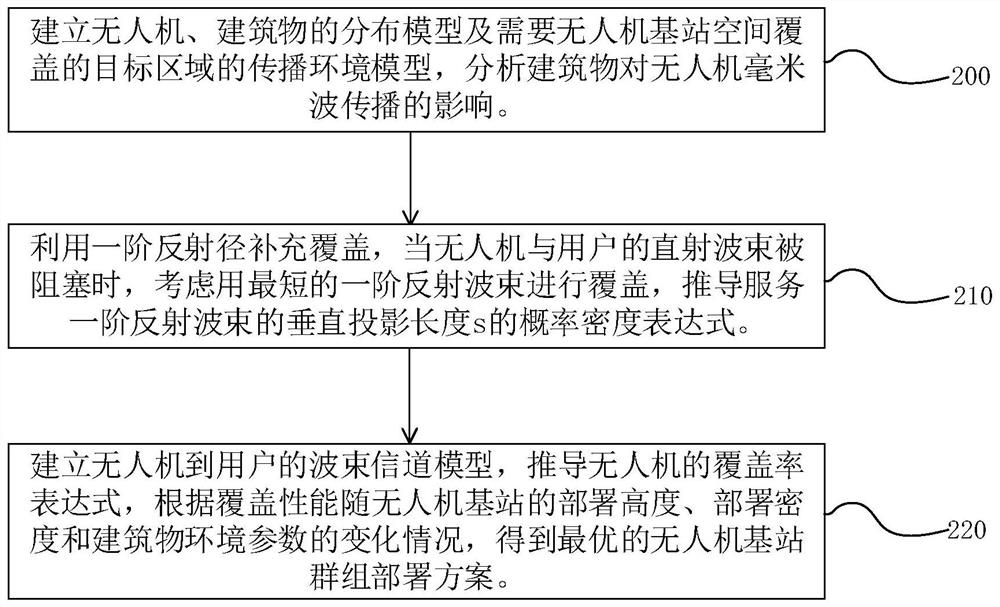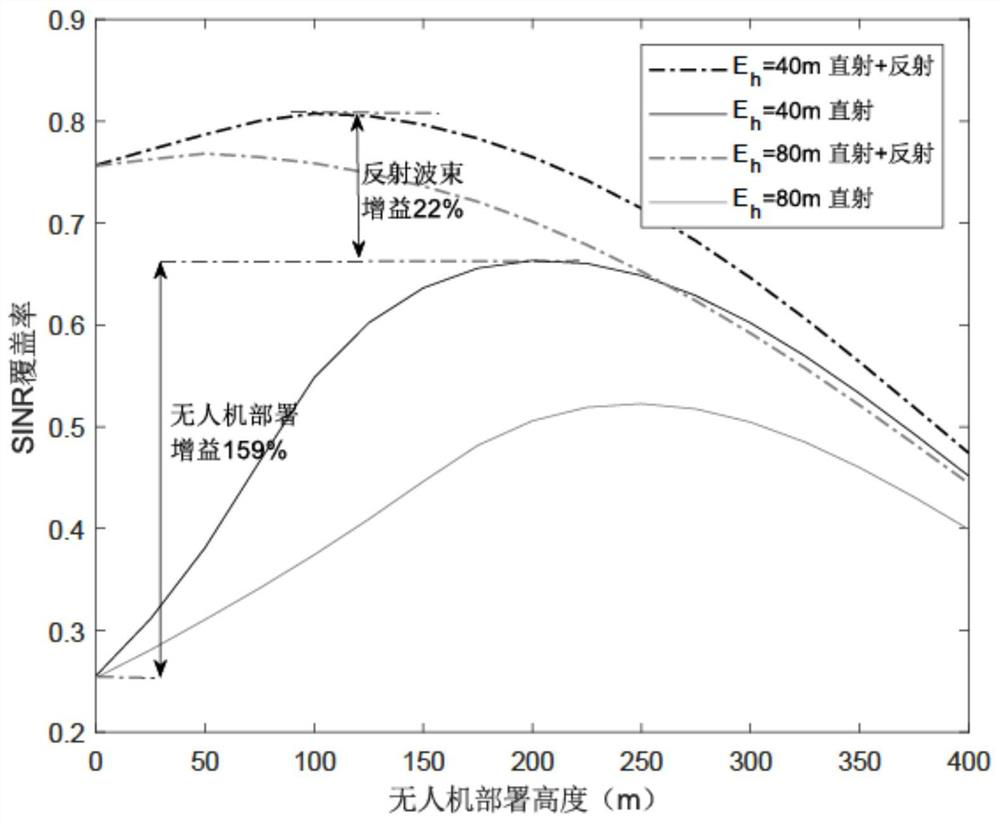Unmanned aerial vehicle base station deployment method for supplementing coverage by utilizing reflected beams
A technology of unmanned aerial vehicles and machine base stations, which is applied in wireless communication, radio transmission system, network planning, etc. It can solve the problems of not considering the coverage potential of reflected beams, unreasonable LOS link connection, etc., and achieve the effect of reducing the probability of interruption
- Summary
- Abstract
- Description
- Claims
- Application Information
AI Technical Summary
Problems solved by technology
Method used
Image
Examples
Embodiment Construction
[0044] Aiming at the coverage blind area of the direct beam of the UAV cellular network, the present invention proposes a UAV base station deployment method using reflected beam supplementary coverage. In dense urban areas, buildings cause serious blockage to millimeter wave beams. For example, the attached figure 1 As shown, the direct beam from the drone to the user is blocked, causing the user to be in the coverage blind spot of the direct beam of the drone. Comes the cost increase, however, the building blocks the beam while generating abundant reflections, as shown in the attached figure 1 The first-order reflection path 1 and the first-order reflection path 2 in are just aligned with the user and can provide services for the user. At this time, it involves the selection of the first-order reflection path. We assume that the UAV chooses the first-order reflection path with the shortest path length Provide services to users.
[0045] Consider using the reflected beam t...
PUM
 Login to View More
Login to View More Abstract
Description
Claims
Application Information
 Login to View More
Login to View More - R&D
- Intellectual Property
- Life Sciences
- Materials
- Tech Scout
- Unparalleled Data Quality
- Higher Quality Content
- 60% Fewer Hallucinations
Browse by: Latest US Patents, China's latest patents, Technical Efficacy Thesaurus, Application Domain, Technology Topic, Popular Technical Reports.
© 2025 PatSnap. All rights reserved.Legal|Privacy policy|Modern Slavery Act Transparency Statement|Sitemap|About US| Contact US: help@patsnap.com



